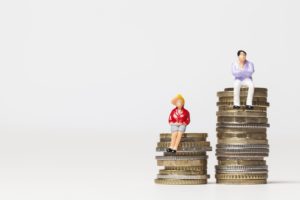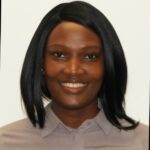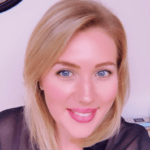women in health & safety
Why does gender bias and discrimination exist in the workplace?
SHP speaks to eight health & safety professionals to learn their views on why gender bias exists and hears some of their personal stories and experiences.

Whether conscious or unconscious, it’s clear that some form of gender bias exists in most organisations, in one form or another. Often based on prejudices and stereotypes, gender bias refers to a preference for one gender over another, leading to people being treated unfairly.
This interview has been split into three parts. Below, in part one, we’re going to look at why gender bias exists and delve into some real-world experiences of women in the health & safety profession. Then, in part two, we will to look at the challenges and advantages women working in a male dominated environment have, before, in the final part, exploring how we overcome gender bias in the workplace.
This interview is part of a series for Women in Health and Safety. As a member of the committee our goal is to amplify the voices of women in the profession. Some of the topics covered affect women more than men. Some are deeply personal. It’s our belief that we bring our whole selves to work and therefore should be able to talk about all sorts of issues that affect us, day-to-day, in a work setting.
Two things have struck us throughout this series. 1) We all have so much in common. 2) People are often very willing to open up, if they’re given a safe opportunity to do so with someone who is willing to listen without judgement. So, our hope is that issues discussed in this series resonate with readers, perhaps making some feel less alone, perhaps even giving some the confidence to share their own stories. We also hope readers will be encouraged to check in on colleagues, talk about the whole selves we bring to work and be there to listen.
Interviewees:
Tiffany Argent
Tiffany is a passionate health and safety professional with CMIOSH status with more than 15 years’ experience. She is currently a Customer Engagement Executive with SafetyCulture. She has a foundation in the science sector, and experience in manufacturing, warehousing and logistics industries.
Fari Fathi
Dr. Fari Fathi is the owner and founder of Ace Safety 365 and, currently, Health and Safety Officer at Genecis Bioindustries Inc. She oversees industrial hygiene, chemical safety, biosafety, radiation safety. Her background is science, she has a PhD in analytical chemistry from the University of Toronto. Fari emigrated to Canada, from the Middle East, around 10 years ago.
Fari’s experience of health & safety in Canada is that it is very male dominated. There are few women, and very few from minority backgrounds.
Anne Gardner-Aston
Anne is the Director of Health and Safety at the Canal & River Trust. She has been a safety professional since 2001, with twenty years of experience ensuring safety management in high, medium, and low risk operational environments. Anne has led many high-performing teams of safety professionals with a focus on establishing a positive safety culture and continuous improvement, working with colleagues across organisations to promote industry-leading health & safety performance, employee engagement and wellbeing.
Fiona Gilbert CMIOSH
Fiona is the Head of QSSHE & Compliance with Serco-Transport. She is responsible for leading, developing and providing specialist support to the businesses within the Transport portfolio inclusive of the regulated businesses.
Melissa Mark-Joyce
Melissa is Associate Director EHS UK ED and EMEA CDCS at Labcorp Drug Development. She has 20 years’ experience in operating business centres in the UK, USA and Trinidad, with high levels of experience and a strong track record of leading teams, collaboration, influencing across diverse teams, technical skills and performance delivery in health, environment & safety programs, safety management systems implementation and leading high-performance teams.
Jessy Moreira Gomes
Jessy is Technical Safety Systems Lead at UCL. She has been inspirational and passionate in promoting equality and diversity within the health and safety profession and the UK construction industry in particular. She is a champion of diversity and inclusion, having gone through discrimination and being forced to leave her job after returning from maternity leave. She has made it her mission to share her story, empower other women and bring the issues women face in the industry to the forefront.
In December, Jessy was named amongst SHP’s Most Influential figures in health & safety for 2021.
Rebecca Walpole
Rebecca is Health and Safety Manager at Freshfields Bruckhaus Deringer. She has worked in various gender balanced industries over the past decade but has found health & safety to be very male dominated, particularly at the more senior levels.
Leah Tusiime
Leah is Health, Safety, Environment & Facilities Leader at Honeywell Aerospace, Edinburgh. She graduated from Coventry University with a Masters in Oil and Gas Management. She has worked as a QHSE consultant in many industries including healthcare, logistics, automotive, Aerospace and oil and gas.
What are the reasons for gender bias or discrimination in the workplace?

Jessy Moreira Gomes (JMG): “I think part of it is due to the lack of women in leadership levels. That can have an effect on policies, like maternity leave and how women’s issues are treated. On top of that, women seem to be able to get to a certain level and then find it hard to break through. I think a lot of us take a step back in our careers because of children.
“Also, women are more likely to be the main carer for children, even if both parents are working. You’re likely to be the one who looks after children more, sacrificing work time and looking after activity around the house. If you don’t have a boss who is a female advocate, understanding the woman is more likely to take responsibilities at home (although, of course, this isn’t the case in all households), that makes it harder.
“When you’re in a male-industry, certain types of behaviours can be favoured which are less favourable to women. The flexibility of policy makers and leaders within companies can make decisions that are in favour of parents.
“After I got married, I started to have anxiety about the fact the organisation would look at me differently, expecting me to have a child and then probably a second child.
“I haven’t experienced menopause yet, but organisations have to drive policy around it so that women aren’t penalised because of certain symptoms of the menopause, or pregnancy. It’s also important to remember the way we experience events like menopause and pregnancy will be different from individual to individual. And women can also have difficult symptoms each month, but we don’t speak about it and that can make life difficult.”
Describe some of the instances of discrimination you have experienced in the workplace…
 Fari Fathi (FF): “I’ve seen candidates with much less experience than me hired for positions that I haven’t even been offered an interview for and i’ve experienced a salary gap.
Fari Fathi (FF): “I’ve seen candidates with much less experience than me hired for positions that I haven’t even been offered an interview for and i’ve experienced a salary gap.
“In decision-making meetings, it’s harder to be heard. While ideas from male team members will get more support. You have to put more data, strategy etc. forward for your ideas to be heard.
“When it comes to regulations, when I explain them, I find people try to fact-check me and ask me where I’ve got my information from. I have to get the book of codes, and then show people one-to-one. Or, with fire safety, I’ve had to call the fire department and get them to back up my comments.
“The worst ever thing that I have experienced has been harassment, both from female and male colleagues. I’ve been on the receiving end of psychological harassment from male colleagues who feel they’re at level that they could act any way they liked towards me, raising their voices at me in front of other colleagues, using an aggressive tone in emails and always trying to put me down in meetings. I’ve also experienced some of this from women of a difference race too. Admittedly, in some workplaces, I’ve had more support from male colleagues than female colleagues.
“I am grateful to women throughout history who have enabled women to get to the positions we’re in now, and it makes me determined not to quit. I just have to find ways to overcome it and try to make it better for the next generation.
“Discrimination can make you feel you need to put in more effort because you’re not good enough. That can lead to stress and eventual burn out or depression. The mental health impact can spread so far.
“In Canada there has been a high level of harassment in workplaces, which has impacted people’s mental health. So, the Canadian government now enforced that employer’s provide training to supervisors about workplace harassment.”
 Leah Tusiime (LT): “I’m usually paid lower than male counterparts doing the same job. I took one role and later found out that, when they gave me this role, they took it down by two salary bands. I just kept doing the job though, I didn’t speak about it because I didn’t want to rock the boat – I just looked for a different role where I’d be more appreciated and moved on.
Leah Tusiime (LT): “I’m usually paid lower than male counterparts doing the same job. I took one role and later found out that, when they gave me this role, they took it down by two salary bands. I just kept doing the job though, I didn’t speak about it because I didn’t want to rock the boat – I just looked for a different role where I’d be more appreciated and moved on.
“Also, I find men often assume I don’t know what I’m doing. I’ve always been the only person who looks like me in all the roles I’ve done so far, and that puts pressure on how you’re perceived. You have to work extra hard. There is bias, but I try to work hard to make sure I prove them wrong. I look forward to the day when I will not be judged by my skin colour and gender but on the content and value of what I bring to the table. We still have a big job to do.
“It was hard to speak out, but over time I have learnt to speak up. This is because I have seen other women speak up who have then gone on to do well in the organisation. However, every time I have spoken up, its caused conflict and tension, so I would prefer to just move on for peace to reign.”
 Tiffany Argent (TA): “I worked in a male-dominated workforce in manufacturing and hit a glass ceiling. I was told by one of the directors ‘you won’t be able to commit enough time to become a director in health & safety because you’ve got a family to look after.’ My qualifications and experience weren’t enough. I wasn’t going to succeed because I had children.
Tiffany Argent (TA): “I worked in a male-dominated workforce in manufacturing and hit a glass ceiling. I was told by one of the directors ‘you won’t be able to commit enough time to become a director in health & safety because you’ve got a family to look after.’ My qualifications and experience weren’t enough. I wasn’t going to succeed because I had children.
“On one occasion, a new manager suddenly reviewed my performance after I asked for a pay increase. It was highlighted that I was constantly five minutes late every morning. It had never been an issue before, and I worked an extra 30 minutes every day in the evening. The reason I was five minutes late was because my children’s nursery didn’t open until 08.00 and it took me 35 minutes to get from there to work. He suggested I could just leave my children on the doorstep of the nursery, or my husband could do it. I’m a single parent! I decided that their policy was not inclusive, and I moved on rather than confronting them. Looking back, I wish I had the courage to push back like I see other women in the media now.”
 Melissa Mark-Joyce (MMJ): “I’ve worked in male-dominated offshore oil & gas in Trinidad, the US and the UK. As a young female engineer early in my career, I was the only woman offshore and some people felt I shouldn’t be there. They didn’t think it was suited to women because it was a rough environment with heavy machinery.
Melissa Mark-Joyce (MMJ): “I’ve worked in male-dominated offshore oil & gas in Trinidad, the US and the UK. As a young female engineer early in my career, I was the only woman offshore and some people felt I shouldn’t be there. They didn’t think it was suited to women because it was a rough environment with heavy machinery.
“The culture was challenging at times. I wasn’t always listened to or included. I became the line manager for the offshore teams when I was 30, with five-eight years’ experience. I was leading a team of 200 offshore workers and some of my direct reports struggled with that. They were resistive. The good thing was the company encouraged conversations and support mechanisms to allow me to do well.
“Working with those who resisted me being in a leadership position was an opportunity for me. I learnt how to engage and motivate people who may have barriers up even before they get to know you.
“I’ve noticed things change massively over the years though and don’t experience it anymore. There is still work to be done but organizations have seen the importance of diversity and inclusion.
“Networks like Women in Health & Safety in the UK, OneWISH – the Global Coalition of Women in Safety and Health Networks, and the Women’s Energy Network, which I was involved in the US, help support women in similar situations to mine. Hearing stories and best practices from others can really help.”
 Fiona Gilbert (FG): “I can give you two examples.
Fiona Gilbert (FG): “I can give you two examples.
“At London Underground, I was working in a team of seven – six men and me. We were all the same grade, with various strengths, weaknesses and experiences. One day, all the guys were away from their desks and a project manager came over, asking to speak to one of them. I said they weren’t around, but I could help. This project manager asked me a technical question about health & safety, which I answered. All was fine and he went away. Later that day, I popped out for lunch, and whilst I’d been away, he had come back and asked the men in the team to check the answer I’d given him. My teammate stood up for me – he said: ‘Fiona’s answered it, so why are you asking me?’”
“On another occasion, working for another train operating company, I was in a technical meeting about safety validation. There were six of us in the meeting room, I was the only woman. One of the guys got my name wrong three times, he called me completely different names each time. He wasn’t taking me seriously and was just being rude. Again, someone stood up for me and on the third time, one of my colleagues said, ‘her name’s Fiona’. It made me cross, but it also affected my confidence. It makes you think ‘well maybe I shouldn’t be here.’ I’ve had it again and again, where I’m the only woman in the meeting and somebody just hasn’t looked at me.
“Also, in that role, people used to come to me and assume I was team admin or the receptionist, purely because I was female.
“I got a tip once, to go and sit in the middle of the meeting room table if you’re the only woman in there, don’t sit at the edge. I made a point of doing that at London Underground because it was so male dominated. It makes it harder for you to be ignored. But you shouldn’t have to do that. I also always wear a jacket when I go into face-to-face meetings because I notice I get taken more seriously when I do. But again, you shouldn’t have to do that.
“Also, in that role, people used to come to me and assume I was team admin or the receptionist, purely because I was female.”
 Anne Gardner-Aston (AGA): “At the start of my career I wouldn’t have called it ‘gender bias’. I would have thought it was more about being junior. But somebody came into the organisation who was similarly junior, but male, and they didn’t get asked to make the tea or go out and get the sandwiches. That was my first introduction to it. And it’s only really in retrospect that you think, ‘Oh, for God’s sake, how did I miss that?’
Anne Gardner-Aston (AGA): “At the start of my career I wouldn’t have called it ‘gender bias’. I would have thought it was more about being junior. But somebody came into the organisation who was similarly junior, but male, and they didn’t get asked to make the tea or go out and get the sandwiches. That was my first introduction to it. And it’s only really in retrospect that you think, ‘Oh, for God’s sake, how did I miss that?’
“More latterly, it’s the old tropes of being cut across in meetings, not being allowed to finish a sentence before somebody else carves in on it and having ideas appropriated. You’ve put something forward for discussion to test it out, and a someone will pick it up and take it to the boss as his idea. Maybe that’s a confidence thing, about needing to test ideas out before presenting them to somebody in authority. Being ignored in a conversation, even though you’re the more senior party.
“Having been involved with OneWISH recently, a group of us were talking about a health and safety publication, and we went through it cover to cover and there was one picture of a woman in there, and it was a by-line picture. It was tiny. And even all the adverts were photos of men. And I couldn’t understand how someone in this day and age could look at that and think it was fine to publish. There’s a bias that is perhaps invisible to a lot of people who are in decision making positions.
“A lot of what we’re trying to do with diversity and inclusion and is amplify underrepresented groups and bring it into the conscious brain more so that people recognise it when they see it. Tides are turning slightly, and those feminine traits are being valued and respected and they they’re becoming a little bit of the norm.”
 Rebecca Walpole (RW): “I once had a conversation with a male manager who said, ‘women don’t have the right brains for health and safety’.
Rebecca Walpole (RW): “I once had a conversation with a male manager who said, ‘women don’t have the right brains for health and safety’.
“I’ve been in situations where I’ve been made aware that, as a female, I wouldn’t succeed. I’ve experienced innuendos in the office, where you feel you have to go along with it, or you won’t fit in.”
Click here for the second part in this series, on the challenges and advantages women working in a male dominated environment have.
In part three, we explore how we overcome gender bias in the workplace, click here to read.
Read more from this Women in Health & Safety interview series.
Why does gender bias and discrimination exist in the workplace?
SHP speaks to eight health & safety professionals to learn their views on why gender bias exists and hears some of their personal stories and experiences.
Charlotte Geoghegan
SHP - Health and Safety News, Legislation, PPE, CPD and Resources Related Topics
Lives depend on asbestos action, says IOSH
SHP’s Most Influential in Health & Safety Winner: Steve Harris on the importance of being a values-driven OSH professional
HSE acknowledge issue of ill-fitting PPE as regulator engage with SHP



 Fari Fathi (FF): “I’ve seen candidates with much less experience than me hired for positions that I haven’t even been offered an interview for and i’ve experienced a salary gap.
Fari Fathi (FF): “I’ve seen candidates with much less experience than me hired for positions that I haven’t even been offered an interview for and i’ve experienced a salary gap. Leah Tusiime (LT): “I’m usually paid lower than male counterparts doing the same job. I took one role and later found out that, when they gave me this role, they took it down by two salary bands. I just kept doing the job though, I didn’t speak about it because I didn’t want to rock the boat – I just looked for a different role where I’d be more appreciated and moved on.
Leah Tusiime (LT): “I’m usually paid lower than male counterparts doing the same job. I took one role and later found out that, when they gave me this role, they took it down by two salary bands. I just kept doing the job though, I didn’t speak about it because I didn’t want to rock the boat – I just looked for a different role where I’d be more appreciated and moved on. Tiffany Argent (TA): “I worked in a male-dominated workforce in manufacturing and hit a glass ceiling. I was told by one of the directors ‘you won’t be able to commit enough time to become a director in health & safety because you’ve got a family to look after.’ My qualifications and experience weren’t enough. I wasn’t going to succeed because I had children.
Tiffany Argent (TA): “I worked in a male-dominated workforce in manufacturing and hit a glass ceiling. I was told by one of the directors ‘you won’t be able to commit enough time to become a director in health & safety because you’ve got a family to look after.’ My qualifications and experience weren’t enough. I wasn’t going to succeed because I had children. Melissa Mark-Joyce (MMJ): “I’ve worked in male-dominated offshore oil & gas in Trinidad, the US and the UK. As a young female engineer early in my career, I was the only woman offshore and some people felt I shouldn’t be there. They didn’t think it was suited to women because it was a rough environment with heavy machinery.
Melissa Mark-Joyce (MMJ): “I’ve worked in male-dominated offshore oil & gas in Trinidad, the US and the UK. As a young female engineer early in my career, I was the only woman offshore and some people felt I shouldn’t be there. They didn’t think it was suited to women because it was a rough environment with heavy machinery. Fiona Gilbert (FG): “I can give you two examples.
Fiona Gilbert (FG): “I can give you two examples. Anne Gardner-Aston (AGA): “At the start of my career I wouldn’t have called it ‘gender bias’. I would have thought it was more about being junior. But somebody came into the organisation who was similarly junior, but male, and they didn’t get asked to make the tea or go out and get the sandwiches. That was my first introduction to it. And it’s only really in retrospect that you think, ‘Oh, for God’s sake, how did I miss that?’
Anne Gardner-Aston (AGA): “At the start of my career I wouldn’t have called it ‘gender bias’. I would have thought it was more about being junior. But somebody came into the organisation who was similarly junior, but male, and they didn’t get asked to make the tea or go out and get the sandwiches. That was my first introduction to it. And it’s only really in retrospect that you think, ‘Oh, for God’s sake, how did I miss that?’ Rebecca Walpole (RW): “I once had a conversation with a male manager who said, ‘women don’t have the right brains for health and safety’.
Rebecca Walpole (RW): “I once had a conversation with a male manager who said, ‘women don’t have the right brains for health and safety’.